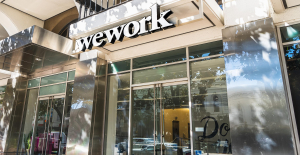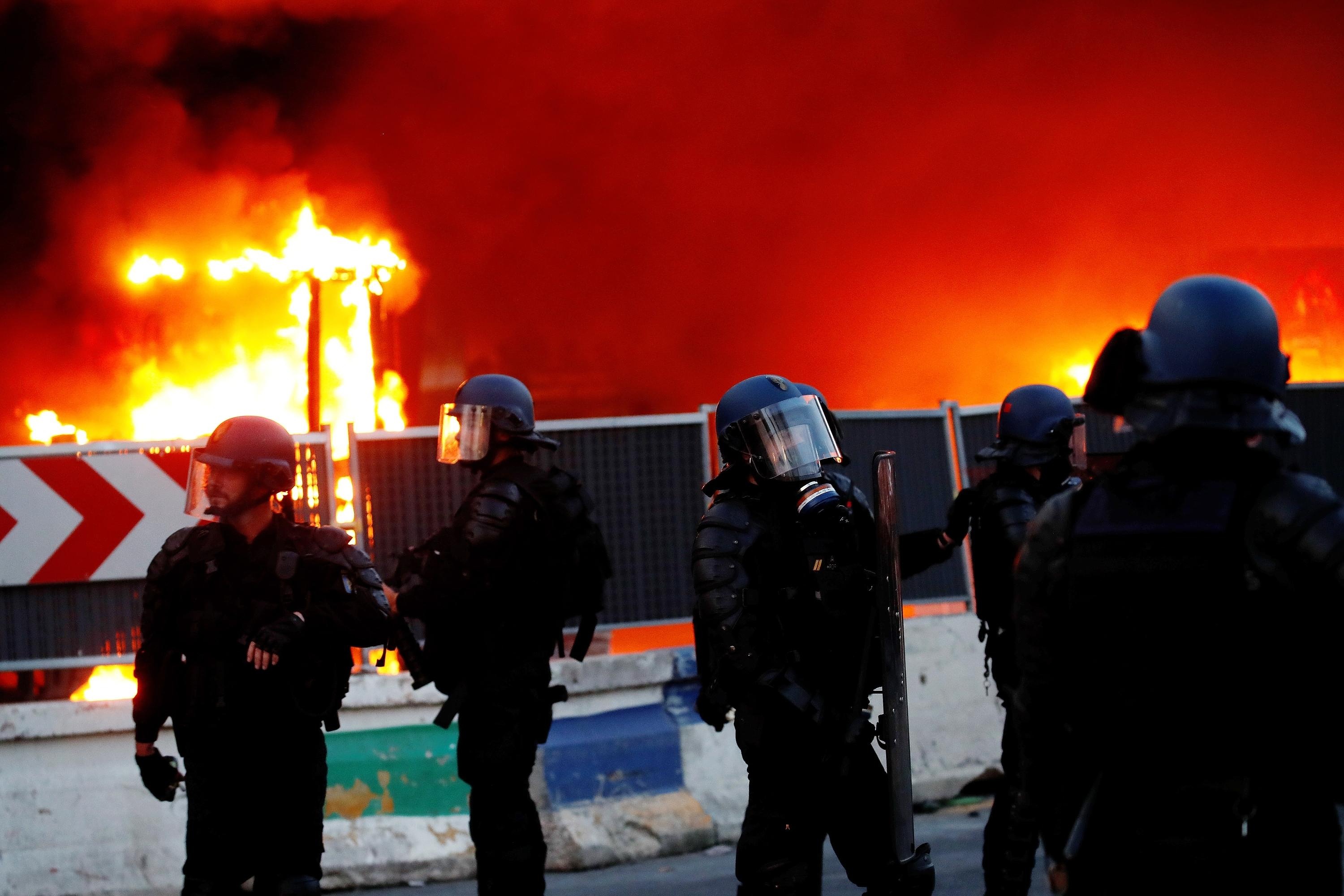The complaint, registered Monday at the central police station in Paris, has not stopped making noise. Filed in the name of the Lumière sur le patrimoine association chaired by Philippe Machicote, it concerns “the theft and concealment of theft” of a pair of polychrome stained glass medallions from the 13th century, coming from the spandrels of the north rose window of the transept of Notre-Dame de Paris. After months of research, Philippe Machicote, who worked for antique galleries but believes he has no authority to be an art historian, created the association in July, motivated by this scandal discovered late. He decided to act.
Questioned by Le Figaro, Philippe Machicote recounts the affair. “My investigation led me to Sotheby's which put up for sale in Paris in 2015, two stained glass windows which are in fact imprescriptible and inalienable national treasures since they were removed from a cathedral which already belonged to the State, and this since the Revolution, the catalog being authentic,” he explains. In the notice accompanying the two objects is written in full “The stained glass windows were replaced during the renovation of the cathedral under Viollet-le-Duc around 1862”. For the amateur investigator, the crime is beyond doubt. “The stolen originals were therefore sold in the 19th century and resurfaced one hundred and fifty years later, drowned in a current sale of old paintings, sculptures and drawings, orchestrated by Sotheby’s,” he believes.
Numbers 153 and 154 in the Sotheby's catalog, these two stained glass windows estimated between 40,000 and 60,000 euros each at the time, were sold for 111,000 and 123,000 euros respectively. They were sold separately, which now complicates their location. One, 39.5 cm in diameter, represented a ceroferary angel (who carries a candle), the other 42.5 cm, a thuriferous angel (who carries a censer). They had obviously been removed in the middle of the 19th century and replaced, while the building - now under renovation after the devastating fire of April 15, 2019 - was being restored under the authority of Viollet-le-Duc.
Driven by the conviction that the 2015 sale poses a significant heritage problem, Philippe Machicote created his association Lumière sur le patrimoine, which intends to represent citizens concerned with preserving cultural property in France belonging to all and which aims to fight against the impoverishment of national heritage by actively contributing to the recovery of stolen works of art. In the case of the original stained glass windows of Notre-Dame de Paris, it must be believed that the State was unaware of the disappearance of the works in the 19th century and was not further aware of the 2015 sale. Was there a failure at the Ministry of Culture? The pair of stained glass windows have in any case not been banned from leaving the country. “We asked questions, we waited for answers: they did not arrive,” protests Philippe Machicote. The time for action has come.”
For its part, the auction house defends itself against any oddities. “Before putting these goods up for sale in 2015, extensive research was carried out and a detailed note was published in the sale catalog,” explains Sotheby’s to Le Figaro. We have also obtained all necessary authorizations from the competent authorities, including export authorizations. Experts and museum curators have finally been warned.” The house also explains that it “was not contacted by the association prior to this complaint” and that it is “at the disposal of the authorities to assist them in this investigation”.
“The association's fight can only be effective if we denounce the scandalous practices of the auction houses which, in defiance of the law, which is particularly severe against concealers of theft, squander with complete impunity what comes from, among others, in the public domain, asserts the art lover. We want to enforce the law and remind players in the art market of the penalties incurred, exactly twice as severe for professionals as for sellers and buyers as indicated in article 321-2 of the Penal Code. Reccealing is in fact punishable by ten years' imprisonment and a fine of 750,000 euros in two cases: when it is committed "in a habitual manner or using the facilities provided by the exercise of a professional activity" or when it is committed “in an organized gang”. According to our information, the brigade for the suppression of banditry has been seized of the investigations.
If the 2015 sale and the provenance of the medallions are proven, some mysteries remain about what exactly happened in the 19th century. In 1862, the north rose window of the transept was restored. Why were these stained glass windows replaced? “I found this curious, because at that date, the cathedral belonged to the State, and had done so since the Revolution. Everything that leaves the building in the 19th century is de facto imprescriptible and inalienable. The situation is ludicrous,” said Philippe Machicote.
Alfred Gérente (1821-1868) was the glassmaker of Viollet-le-Duc on the Notre-Dame construction site. Was it he who decided to place copies to replace the two stained glass windows in question or was it Viollet-le-Duc, as Sotheby’s explains in its catalog? Still, the originals were put up for public sale. According to the auction house, by another restorer, “Edouard Didron, between 1877 and 1905”. “Two other stained glass windows, similar to those sold by Sotheby’s, are today at the Geneva Museum of Art and History. They were bequeathed by Gustave Revilliod when he gave his collection to the city, by will. Another which comes from the south rose, on the Seine side, representing an Annunciation, is in the Mayer van den Bergh museum in Antwerp. It was offered by the owner's mother (with her entire collection) and has since been classified as a Flemish treasure. Proof that other stained glass windows also flew away at the time,” notes Philippe Machicote. “I wrote to the ministry on July 11 for explanations,” he continues. I did not have a real response to my letter addressed to the Directorate of Heritage and Architecture of the Ministry of Culture, with a copy to the Minister of Culture. So I filed a complaint.”
For a pair of stained glass windows from Saint-Denis put on sale at Pierre Berger

 What is chloropicrin, the chemical agent that Washington accuses Moscow of using in Ukraine?
What is chloropicrin, the chemical agent that Washington accuses Moscow of using in Ukraine? Poland, big winner of European enlargement
Poland, big winner of European enlargement In Israel, step-by-step negotiations for a ceasefire in the Gaza Strip
In Israel, step-by-step negotiations for a ceasefire in the Gaza Strip BBVA ADRs fall almost 2% on Wall Street
BBVA ADRs fall almost 2% on Wall Street Children born thanks to PMA do not have more cancers than others
Children born thanks to PMA do not have more cancers than others Breast cancer: less than one in two French women follow screening recommendations
Breast cancer: less than one in two French women follow screening recommendations “Dazzling” symptoms, 5,000 deaths per year, non-existent vaccine... What is Lassa fever, a case of which has been identified in Île-de-France?
“Dazzling” symptoms, 5,000 deaths per year, non-existent vaccine... What is Lassa fever, a case of which has been identified in Île-de-France? Sánchez cancels his agenda and considers resigning: "I need to stop and reflect"
Sánchez cancels his agenda and considers resigning: "I need to stop and reflect" “Amazon product tester”: the gendarmerie warns of this new kind of scam
“Amazon product tester”: the gendarmerie warns of this new kind of scam “Unjustified allegations”, “promotion of illicit products”… Half of the influencers controlled in 2023 caught by fraud repression
“Unjustified allegations”, “promotion of illicit products”… Half of the influencers controlled in 2023 caught by fraud repression Extension of the RER E: Gabriel Attal welcomes a “popular” ecology project
Extension of the RER E: Gabriel Attal welcomes a “popular” ecology project WeWork will close 8 of its 20 shared offices in France
WeWork will close 8 of its 20 shared offices in France “We were robbed of this dignity”: Paul Auster’s wife denounces the betrayal of a family friend
“We were robbed of this dignity”: Paul Auster’s wife denounces the betrayal of a family friend A masterclass for parents to fill in their gaps before Taylor Swift concerts
A masterclass for parents to fill in their gaps before Taylor Swift concerts Jean Reno publishes his first novel Emma on May 16
Jean Reno publishes his first novel Emma on May 16 Cannes Film Festival: Meryl Streep awarded an honorary Palme d’Or
Cannes Film Festival: Meryl Streep awarded an honorary Palme d’Or Omoda 7, another Chinese car that could be manufactured in Spain
Omoda 7, another Chinese car that could be manufactured in Spain BYD chooses CA Auto Bank as financial partner in Spain
BYD chooses CA Auto Bank as financial partner in Spain Tesla and Baidu sign key agreement to boost development of autonomous driving
Tesla and Baidu sign key agreement to boost development of autonomous driving Skoda Kodiaq 2024: a 'beast' plug-in hybrid SUV
Skoda Kodiaq 2024: a 'beast' plug-in hybrid SUV The home mortgage firm rises 3.8% in February and the average interest moderates to 3.33%
The home mortgage firm rises 3.8% in February and the average interest moderates to 3.33% This is how housing prices have changed in Spain in the last decade
This is how housing prices have changed in Spain in the last decade The home mortgage firm drops 10% in January and interest soars to 3.46%
The home mortgage firm drops 10% in January and interest soars to 3.46% The jewel of the Rocío de Nagüeles urbanization: a dream villa in Marbella
The jewel of the Rocío de Nagüeles urbanization: a dream villa in Marbella Europeans: a senior official on the National Rally list
Europeans: a senior official on the National Rally list Blockade of Sciences Po: the right denounces a “drift”, the government charges the rebels
Blockade of Sciences Po: the right denounces a “drift”, the government charges the rebels Even on a mission for NATO, the Charles-de-Gaulle remains under French control, Lecornu responds to Mélenchon
Even on a mission for NATO, the Charles-de-Gaulle remains under French control, Lecornu responds to Mélenchon “Deadly Europe”, “economic decline”, immigration… What to remember from Emmanuel Macron’s speech at the Sorbonne
“Deadly Europe”, “economic decline”, immigration… What to remember from Emmanuel Macron’s speech at the Sorbonne These French cities that will boycott the World Cup in Qatar
These French cities that will boycott the World Cup in Qatar Champions Cup: Toulouse with Flament and Kinghorn against Harlequins, Ramos replacing
Champions Cup: Toulouse with Flament and Kinghorn against Harlequins, Ramos replacing Tennis: still injured in the arm, Alcaraz withdraws from the Masters 1000 in Rome
Tennis: still injured in the arm, Alcaraz withdraws from the Masters 1000 in Rome Sailing: “Like a house that threatens to collapse”, Clarisse Crémer exhausted and in tears aboard her damaged boat
Sailing: “Like a house that threatens to collapse”, Clarisse Crémer exhausted and in tears aboard her damaged boat NBA: Patrick Beverley loses his temper and throws balls at Pacers fans
NBA: Patrick Beverley loses his temper and throws balls at Pacers fans


















